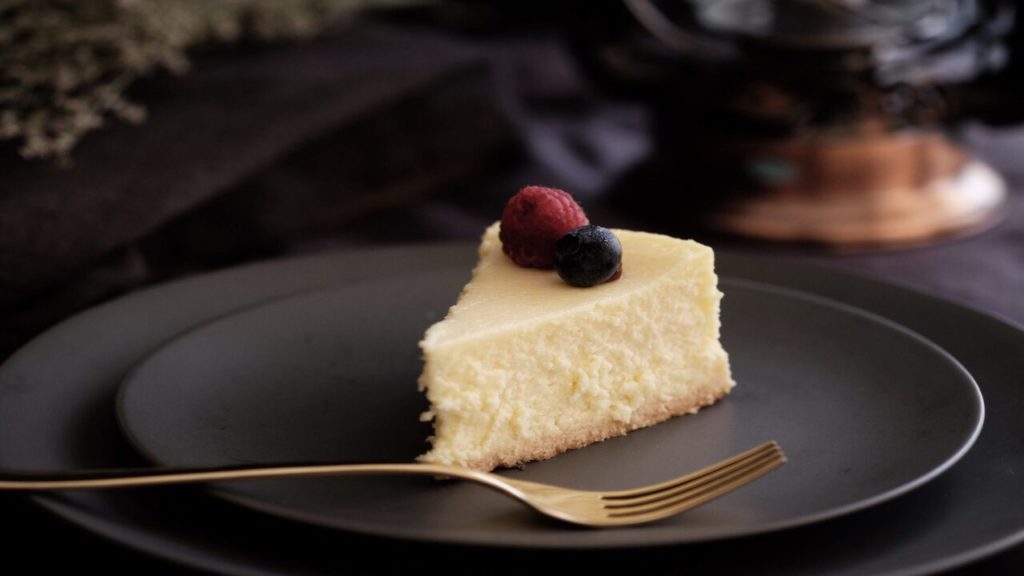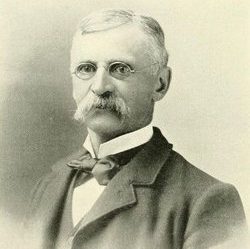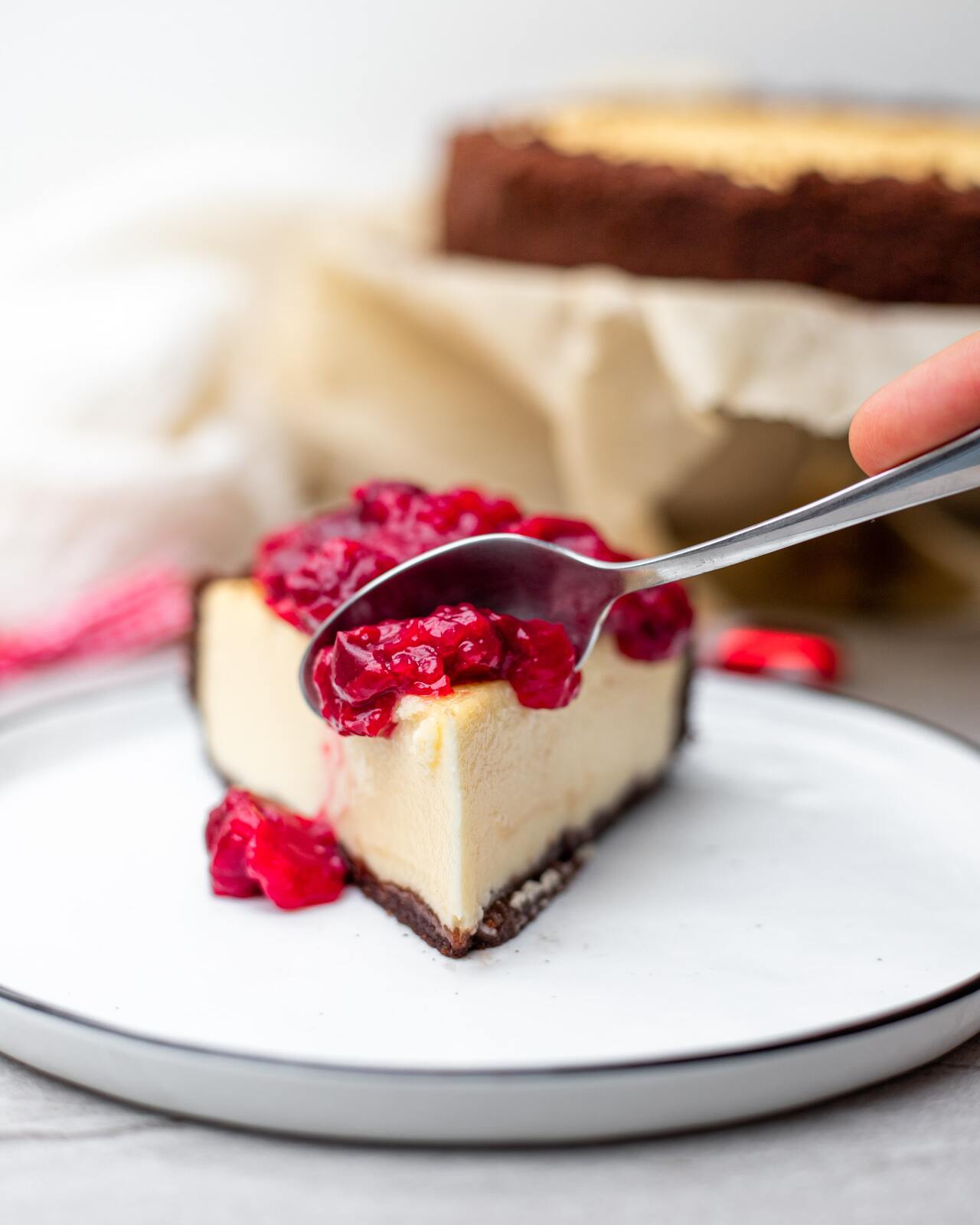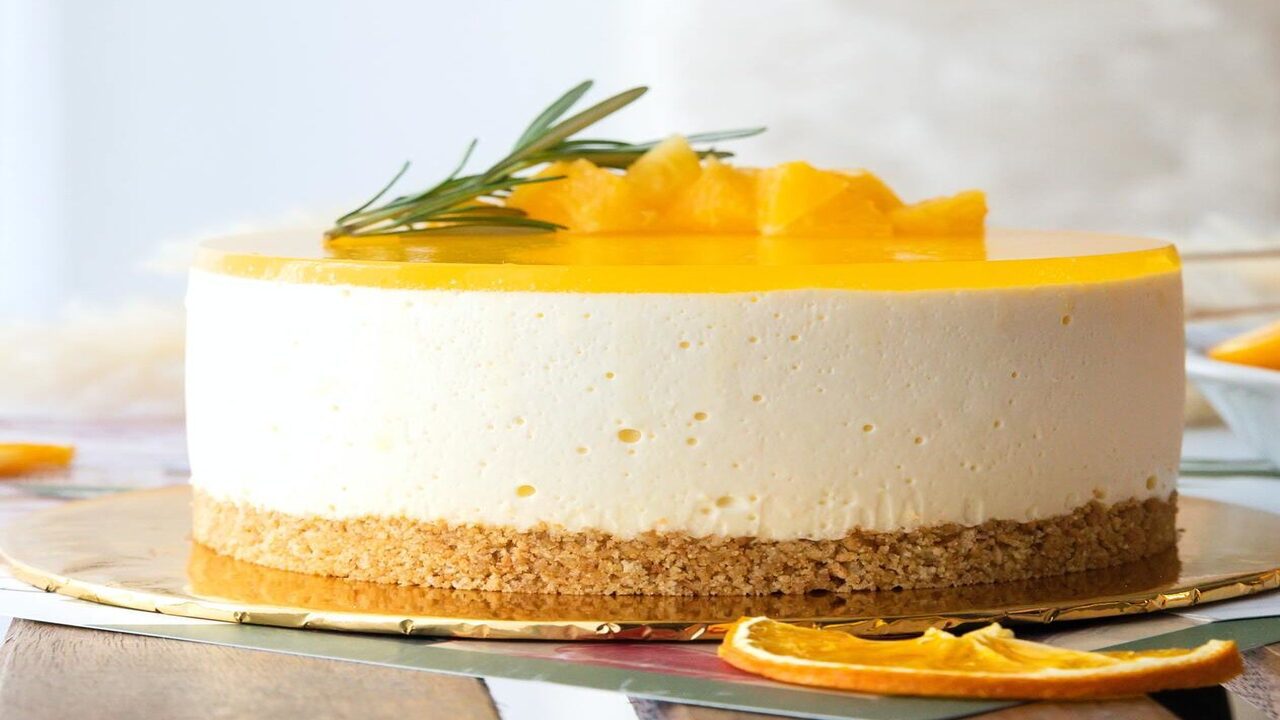Cheesecake is a versatile dessert made of soft cheese, butter, eggs, sugar, vanilla, cream, crackers, or sponge cake.
Do you know that not all cheesecakes are prepared equally?
Some cheesecakes go to the fridge to set, while others go to the oven to bake. Some have a base with crackers or sponge cake; others do not.
Exotic recipes, like the one from the Basque country, give instructions to intentionally burn the crust, providing a bitter, creamy outer layer inside.
Sophisticated cheesecakes have fruit compote served on top. On the other hand, traditional ones are simple, highlighting cream cheese’s flavor and soft texture.
Although cheesecake has been made for centuries, a single person didn’t create the original recipe. It resulted from culinary evolution, in which the Americans refined the recipe and made New York Cheesecake a worldwide hit.
A dessert without a cheesecake is like a beautiful woman with only one eye.
-JEAN ANTHELME BRILLAT-SAVARIN – French lawyer, politician and chef
Jump To Section
- The Origin Of The Cheesecake
- The New Yorker Cheesecake
- The Main Ingredients Of Cheesecake: Facts And Curiosities
- Different Types Of Cheesecakes
- 9 Essential Tips To Make A Perfect Cheesecake
- How To Make A Classical New York Cheesecake
The Origin Of The Cheesecake
Cheesecake is appreciated worldwide, and its origin dates back centuries. However, many believe that New Yorkers invented the dessert.
By the 5th century B.C., the ancient Greeks made the “plakous,” meaning “flat mass,” a rudimentary cheesecake that consisted of fresh cheese, flour, and honey, cooked on an earthenware griddle.
The Romans called the cake “Libum,” which is sometimes served on special occasions. Marcus Cato, a Roman politician in the first century B.C., is credited with recording the oldest known cheesecake recipe baked under a hot brick.
The cheese was salty and mature, resulting in a golden-brown crust and soft center, similar to a modern baked cheesecake.
As the Romans expanded their empire, they brought cheesecake recipes to the Europeans, and English, French, and Germans could develop their own methods according to cultural taste and period technology. Later, when Europeans came to America, they brought cheesecake recipes in their luggage.
The German influence in many food production areas made the Philadelphians fall in love with cheesecake among English and German-speaking in the 18th century.

The New York cheesecake was credited to Arnold Reuben, a Jewish-German immigrant who owned a succession of restaurants in Manhattan. Reuben recounted that he acquired a cheese pie recipe in 1929 at a dinner party and then replaced cream cheese with curds. In the 30s, after serving his innovative cheesecake to his guests, he gained a reputation, and his recipe was counterfeit by rival delis.
The cheesecake hasn’t remained only in New York. It traveled the country, becoming lighter in Philadelphia, creamy in Chicago with sour cream added to the recipe, and gained an additional layer of cake topping In St. Louis.
No matter what cheesecake it will be, it is truly a dessert that has gone through centuries of evolution to its current iconic status worldwide.
The New Yorker Cheesecake

What makes New York cheesecake unique?
The classic NY dessert is plain, reflecting tradition and creaminess without exaggerating sophistication or ingredients.
Basically, there is no fruit, compote, or jam, and no caramel or chocolate on top or the side. But nothing is preventing you from flavoring and garnishing yours.
The cheesecake base is usually a sponge cake or Graham Crackers.
The texture is dense and rich due to the amount of cream cheese used in the batch added to eggs, sugar, and heavy cream.
Foreign cheesecake recipes call for heavy cream and sour cream to create a more silky and creamy texture, besides having a variety of flavors and garnishes.
Even though every American state has a unique cheesecake, it is impossible not to think about the legendary Lindy’s, Junior’s, and Cheesecake Factory.
Those pastry manufacturers worked hard to improve their recipes to bring the cheesecake to a superior level.
Find out more about each of them:
Lyndy’s
Lindy’s was a deli and restaurant chain located in New York. Leo Lindemann opened Lindy’s doors in 1921, becoming exceptionally well known for its cheesecake, which was, at times, credited as perhaps the most famous in the United States.
After the original store closed in 1957, the Riese Organization acquired the trademark in 1979, opening new restaurants. However, the last of the establishments closed in February 2018.
The smooth, rich cheesecake served at Lindy’s in the 1940s became the quintessential “New York Cheesecake,” the one by which all others are judged.
The American Century Cookbook, Jean Anderson
Junior’s
Junior’s Restaurant was opened on Election Day in 1950 by Harry Rosen. Located at the corner of Flatbush and DeKalb, Brooklyn, Harry gave the restaurant’s name “Junior’s” in honor of his two sons – Walter and Marvin.
In the early 60s, Harry hired Danish-born baker, Eigel Peterson, to work full-time, turning out the restaurant’s specialties.
Junior’s became famous for featuring a full-service bakery replete with Danish, rugelach, and cakes.
As a keen competitor and determined to have the Best Cheesecake in Brooklyn, Harry and Peterson conducted laboratory-like experiments to refine the cheesecake recipe. The results led to a trendy dessert.
Today, Junior´s uses the same techniques as Harry and Peterson from that time in its cheesecakes.
The Cheesecake Factory
During the 1940s in Detroit, Michigan, Evelyn Overton found a local newspaper recipe to inspire her “Original Cheesecake.”
After tremendous success, she decided to open a small Cheesecake shop. Unfortunately, she didn’t expand her business to raise her two children.
However, she kept the baking equipment in her basement to supply cakes to several town restaurants.
Thirty years later, in 1972, Evelyn and her husband Oscar moved to Los Angeles to make one last attempt to own their business by opening The Cheesecake Factory Bakery.
The plan was to sell Evelyn’s cheesecakes to restaurants across LA. With the market growing, the Cheesecake Factory supplied more than 20 varieties of cheesecakes and other desserts.
In 1978 her son David opened The Cheesecake Factory restaurant in Beverly Hills, CA, with an extensive dessert menu. David wished to showcase his mother’s selection of cheesecakes.
Today, there are more than 200 “The Cheesecake Factory” restaurants across the globe.
Cheesecake is so important to Americans that they celebrate National Cheesecake Day on July 30th as “One of America’s favorite desserts.”
The Main Ingredients Of Cheesecake: Facts And Curiosities
Traditionally, the cheesecake’s main ingredients consist of a thick layer of the mixture of soft and fresh cheese, eggs, butter, vanilla, and sugar.
If there is a bottom layer, cookies, such as digestive biscuits, graham crackers, or sponge cake, can compose that part.
Discover some curiosities and facts that surround some of them.
Digestive Biscuit
In 1839 two Scottish doctors developed the digestive biscuit to aid digestion.
The doctors believed that the biscuits had antacid properties due to sodium bicarbonate.
Digestive biscuits are frequently eaten with tea or coffee, and it is one of the top 10 cookies in the United Kingdom for dunking in tea.
Its use in cheesecake is a base to support a layer of cheese and provide crunchiness. Sometimes mixing roasted nuts gives more flavor.
Graham Cracker
In the early 1880s in the United States, the Graham Cracker originated. In its composition, it contains graham flour – a type of whole wheat flour.
The Reverend Sylvester Graham (1794 – 1851) was an American Presbyterian Minister and dietary reformer known for his emphasis on vegetarianism and the social movement against alcoholic beverage consumption.
He became popular with the Grahamism movement, inspiring people to eat a vegetarian diet anchored by bread made from coarsely ground flour at home to remain wholesome and natural.
His popularity stimulated people to develop and market Graham’s flour, bread, and crackers.
However, he neither invented nor received any money from the Graham products sale.
Sponge Cake
Sponge cake had its origins in the second half of the 18th century. It is a cake that, in the original method, consisted of eggs, sugar, butter, and flour. Cheesecake works as a base and is part of Junior’s original recipe. In French cuisine, sponge cake is known as génoise.
Mascarpone
It is a rich, creamy, soft Italian cheese used in the famous dessert Tiramisu.
Mascarpone has more milk fat than cream cheese and makes fantastic cheesecakes.
Possibly created in the late 16th or early 17th centuries, it was produced in autumn and winter for immediate consumption.
Even today, mascarpone is usually consumed shortly after its production.
Cream Cheese
The first references to creamy cheese are from England in 1583 and France in 1651. In the US, it is possible to find Cream cheese recipes in 18th-century cookbooks and newspapers.
Whole milk and skimmed milk are the main ingredients to produce this soft curd cheese.

In 1872, William Lawrence of Chester, New York, discovered the formula for cream cheese while duplicating the French brand Neufchatel. This experiment led to the development of the world-famous Philadelphia Cream Cheese and paved the way for modern-day cheesecakes.
The Philadelphia brand was chosen to wrap the cream cheese because the best milk products were in Philadelphia.
Ricotta
It is thought that the production of ricotta dates back to the Bronze Age.
Today, ricotta uses milk in its production. Originally it was made with whey.
It is low in fat, 8% cow’s milk and 24% sheep’s milk, slightly sweet, and preserves for a short period. It should be moist and white and not dry and discolored.
Ricotta is a main component of many Italian desserts, such as cheesecakes and cannoli.
Cream
The cream is a fat layer skimmed from the top of the milk by centrifugal force before homogenization.
The cream varies in thickness and richness according to the amount of fat. The thicker the cream, the higher the percentage of fat.
Its fat content distinguishes different grades of cream; In many countries, there are regulations for each type.
Canadian cream definitions are similar to those used in the US, except for “light cream,” which is a very low-fat cream, between 5 to 6 percent butterfat.
In the United States, cream varies from “Half and Half” with 10.5% to 18% of fat to manufacturer’s cream with 40% or higher.
Sauces, soups, and desserts, generally use whipping cream with 35%. In cheesecakes, the cream works to soften the texture by adding moisture.
Sour Cream
Sour cream is a dairy product obtained by fermenting regular cream with certain kinds of lactic acid bacteria. It contains no less than 18% milk fat and less than 0.5% acidity.
The name derives from the production of lactic acid by bacterial or sour fermentation.
The main role of sour cream is to add softness and an extra hit of acid tang.
Different Types Of Cheesecakes
How many types of cheesecakes are there?
Whenever cheesecake comes to our minds, it brings an idea of a creamy, smooth, tasty, and well-garnished dessert, besides triggering a reflection on one of the New Yorker’s iconic symbols.
Freshest and finest ingredients adding creativity can result in divinely decadent cheesecakes. Check out some of them:
Currant Cheesecake
- Basque Burnt Cheesecake
- Chocolate Marquise Cheesecake
- Fresh Strawberry Cheesecake
- Raspberry Swirl Cheesecake
- Tropical Fruits Cheesecake
- Blueberry Cheesecake
- Peach Cheesecake
- Currant Cheesecake
- Wild Fruits Cheesecake
9 Essential Tips To Make A Perfect Cheesecake

- Setting the temperature: Turn on the oven as a first step, ensuring it’s fully heated before placing the baking pan. Use an oven thermometer if it is available, and adjust it to the desired temperature.
- Better taste and texture: Use high-quality and full-fat cream cheese.
- Room temperature: The first thing to do is to bring the cream cheese to room temperature. Leave it on the counter for a couple of minutes before it starts.
- Nuts: If you intend to add nuts to your recipe, always use toasted nuts when mixing with the base to add depth to the texture and flavor.
- Butter, the binding agent: If the mixture (cookies+butter) is dry, add more butter. To find out if the amount is correct, take a little bit of the mix with the spoon, and if you can push it together, forming a small ball, that’s about right.
- Creaminess: When using an Electric mixer to incorporate the cheese mixture, do it quickly using a paddle attachment. This way, it will avoid adding air by blending and not whipping.
- Texture: When the mixture stands up pretty firm in a spatula, it is ready for cooking.
- No holes in the cheesecake: After filling the baking pan, tap it gently on the counter. The mixture hits the bottom, stopping all those little air pockets trapped underneath the mix in the cake pan.
- Cooling down: Let it cool down for a few hours or overnight it in the fridge. It’s much easier to cut.
How To Make A Classical New York Cheesecake
At some point, you will want to make a cheesecake. Why not start with a traditional slice of the New Yorker dessert?
Now, get to work! 😋

NY Cheesecake
Equipment
- 10" Springform pan
- Mixer
- Food Processor
- Mixing Bowls
- Whisk
- Spatula
Ingredients
- 250 g Digestive biscuit or Graham crackers
- 120 g Unsalted butter
- 900 g Cream cheese
- 120 g Sour cream
- 5 pcs Eggs
- 150 g Sugar
- 10 ml Vanilla extract
- 1 pc Lemon
Instructions
- Bring the cream cheese to room temperature
- Preheat oven to 160°C/310°F
- Grease the 10 ”springform pan with butter and keep in the fridge until needed.
- Melt the butter.
- In a food processor add the biscuits or crackers and melted butter. Pulse until get really fine crumbs
- Shape the processed cookie into the bottom of the mold with a thickness of around 0.5 cm.
- Bake for about 10 minutes or until a darker golden color. Remove from oven, set aside while making the filling.
Filling
- Add the cream cheese to the mixer. Use the paddle attachment and mix at low speed until creamy.
- Gradually add the sugar.
- Beat the eggs and add them to the mixture little by little.
- Add sour cream, vanilla, lemon juice, and zest to taste. Mix until smooth.
- Transfer to the springform pan, filling almost to the top.
- Tap the pan on the counter gently to eliminate possible air pockets trapped in the mixture.
Baking and Final Steps
- Place in the oven and bake for around 40 to 50 minutes or until the cake's edge is set but the center is still wobbly.
- Remove from the oven and allow to cool to room temperature for 1 hour. Then let it set for more 3 hours in the fridge to make cutting easier.
- Remove it from the springform pan transferring to a nice platter. Garnish with whipped cream, berries, jam, fruit compotes, or serve plain.
Notes
Did you make this recipe?
Leave a comment below and share our content.
Please help our community grow by following our social media on Spotify, Instagram, Facebook, Youtube, and Tiktok. And stay up to date with the news from the world of Gastronomy.
Don’t forget to tag @gastrovinoacademy on Instagram and hashtag it #gastrovinoacademy.
Cheers 🍷


